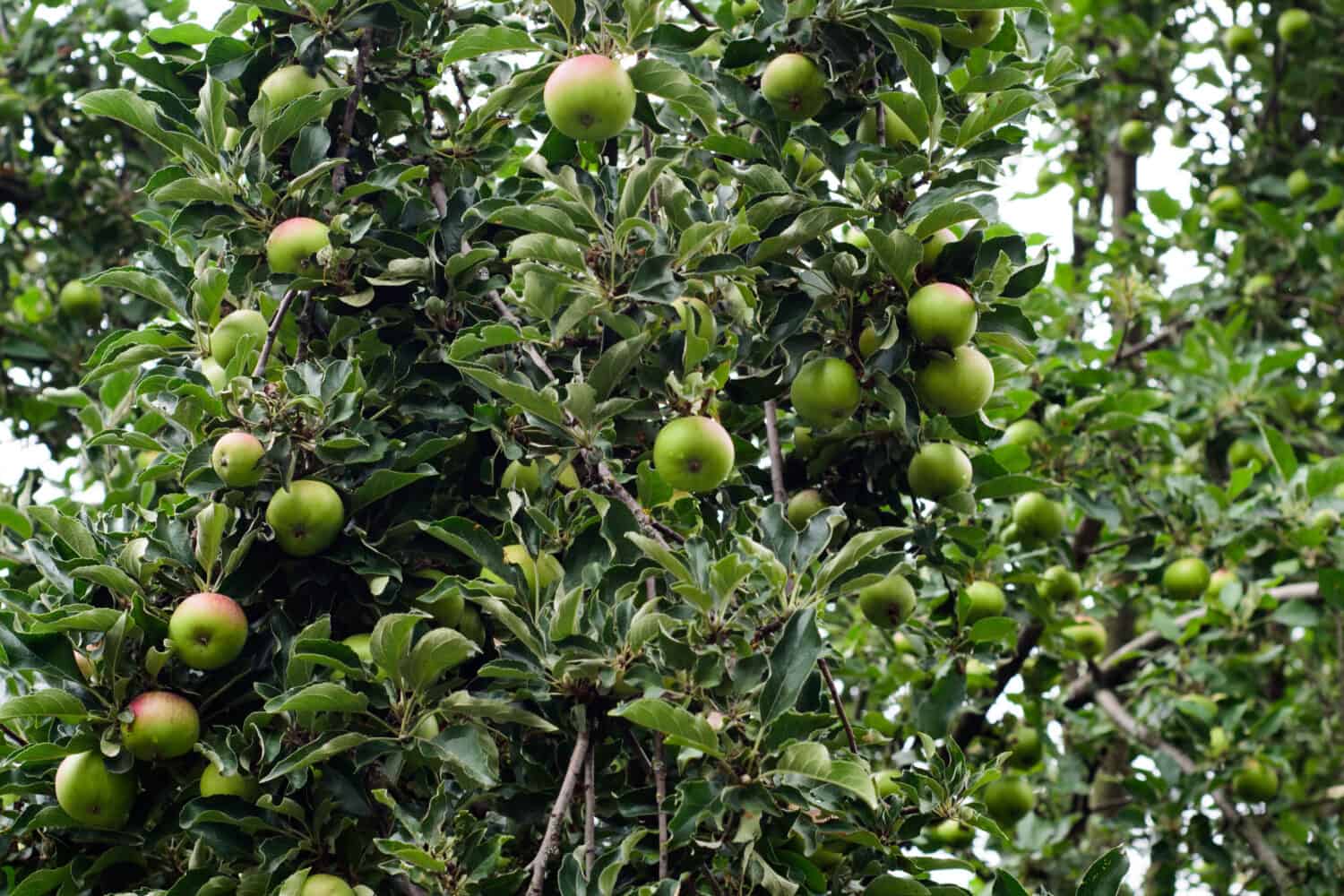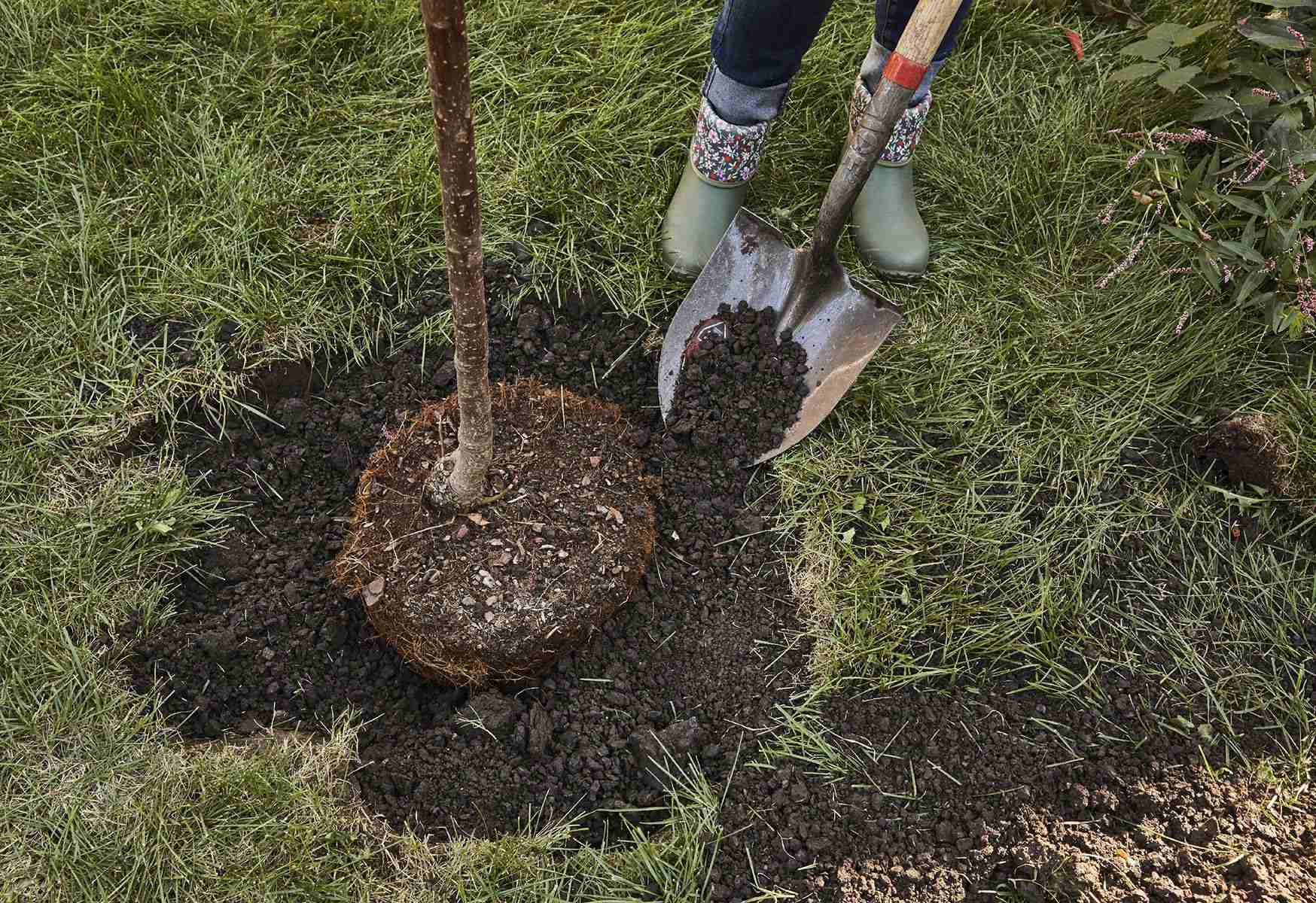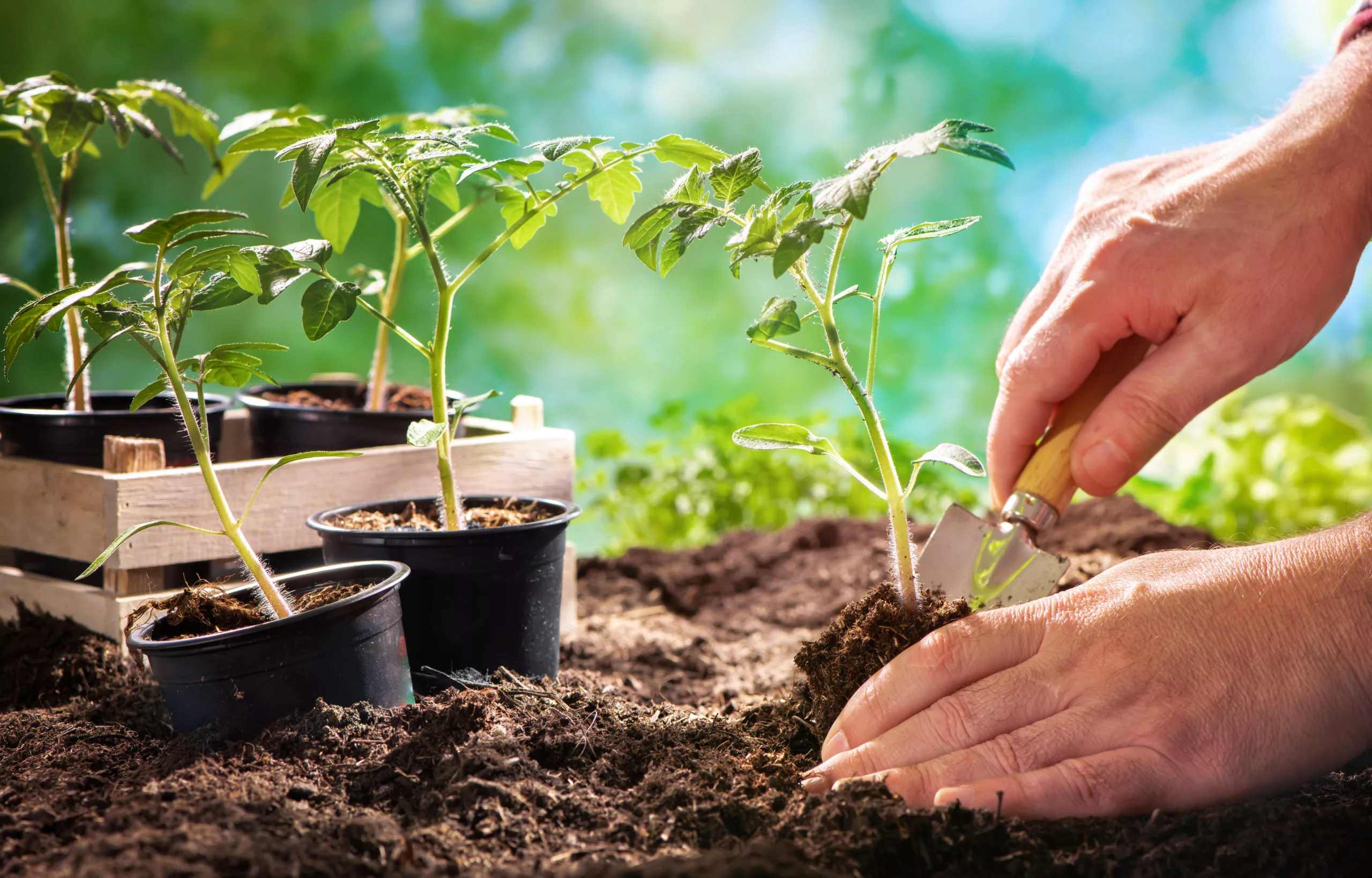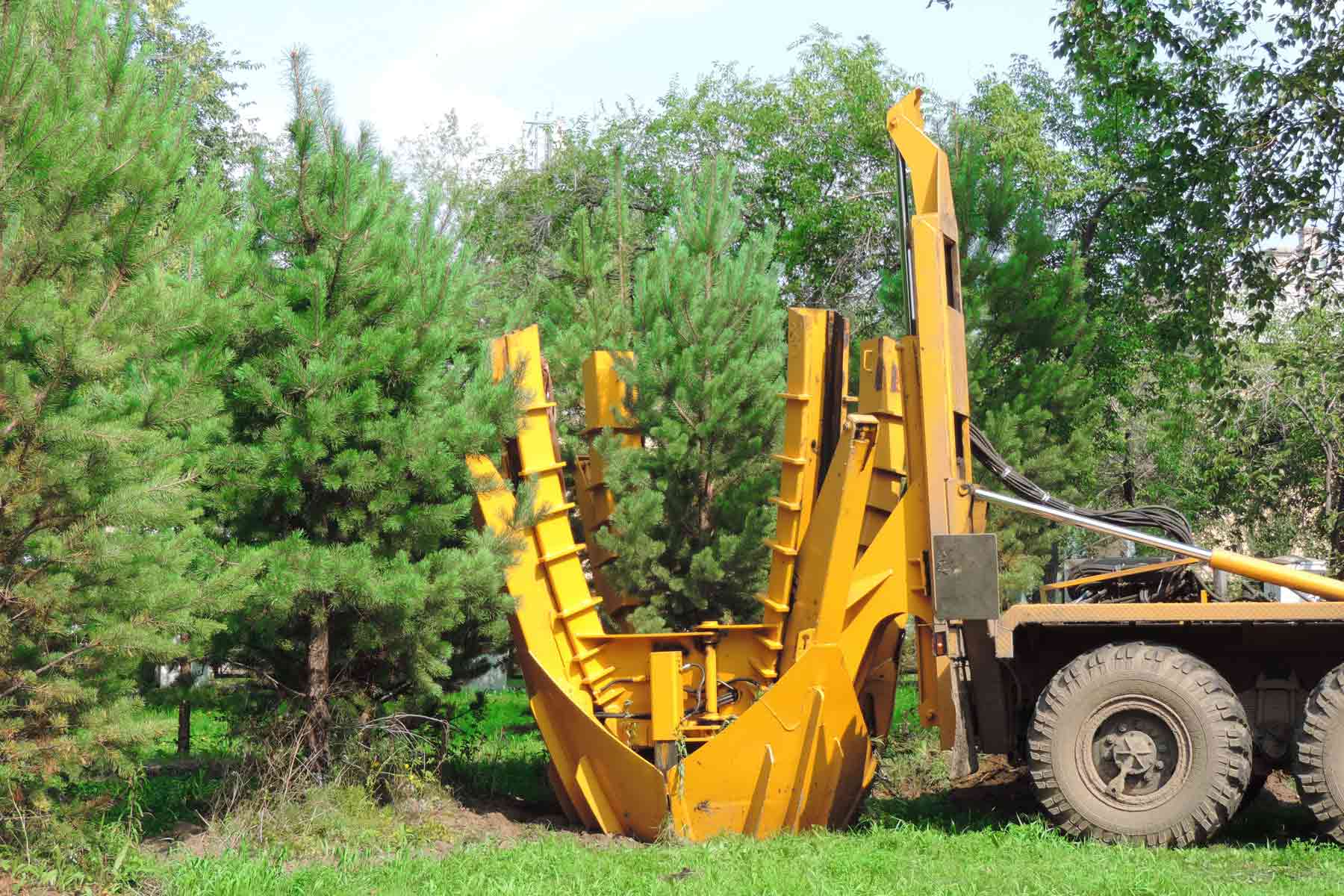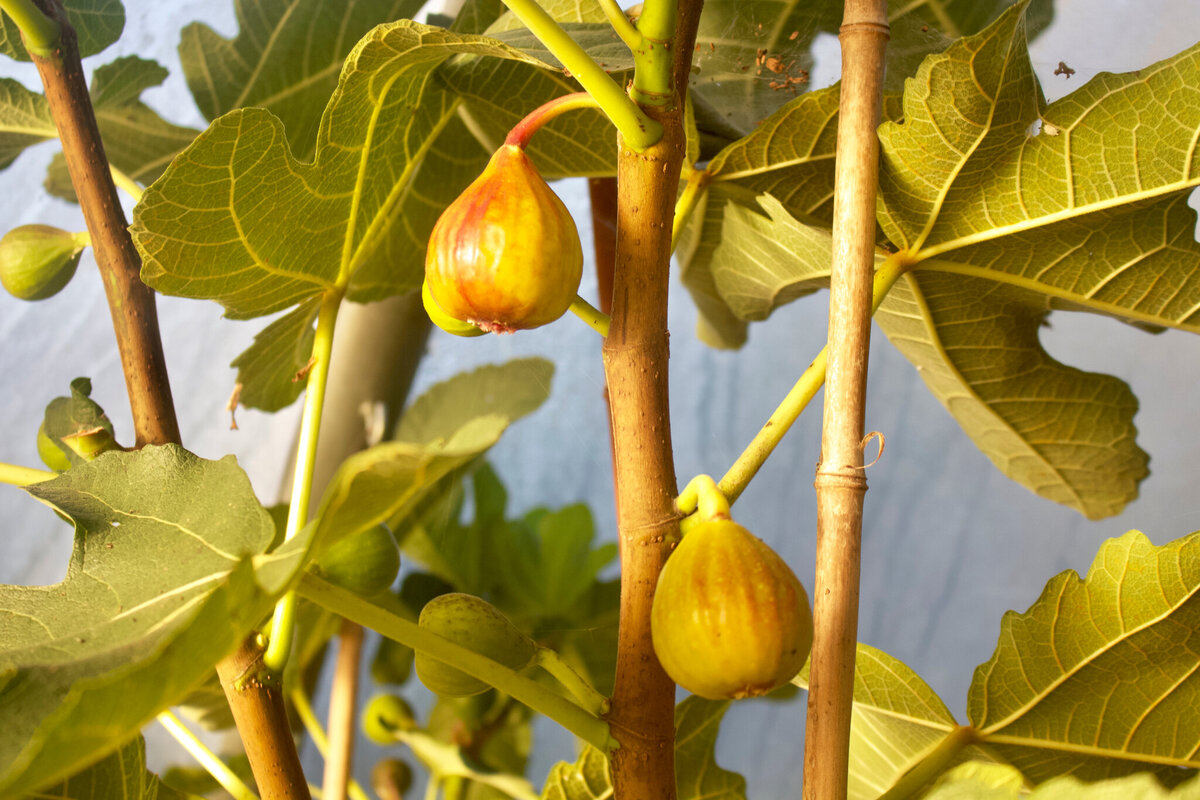Home>Gardening Techniques>Plant Care>When To Plant Satsuma Trees


Plant Care
When To Plant Satsuma Trees
Modified: February 10, 2024
Discover when to plant satsuma trees and essential plant care tips to ensure their successful growth. Learn the best practices for planting and maintaining these citrus trees.
(Many of the links in this article redirect to a specific reviewed product. Your purchase of these products through affiliate links helps to generate commission for Chicagolandgardening.com, at no extra cost. Learn more)
Table of Contents
Introduction
Welcome to the wonderful world of gardening and plant care! If you’re interested in adding a touch of beauty and productivity to your outdoor space, planting and caring for satsuma trees is a fantastic choice. Satsuma trees not only provide fresh and delicious citrus fruits, but they also add a touch of elegance to any garden or landscape.
In this article, we will help you understand the key aspects of planting and maintaining satsuma trees. Whether you’re a seasoned gardener or a novice, the information provided here will guide you through the process of selecting an ideal location, preparing the soil, choosing the right time to plant, and caring for your satsuma tree throughout its lifespan.
Satsuma trees, also known as Citrus unshiu, are a type of mandarin orange tree that originated in Japan. They are prized for their easy-to-peel fruits that are sweet, seedless, and rich in flavor. Satsuma trees are also known for their cold hardiness, making them ideal for growing in various climates.
Before you dive into the fascinating world of satsuma trees, it’s important to understand their specific needs and requirements. By providing the right conditions and care, you can ensure that your satsuma tree thrives and bears an abundant harvest year after year.
So, if you’re ready to embark on a rewarding journey into the world of satsuma tree care, let’s get started by learning about the climate and location requirements that are essential for the successful cultivation of these beautiful citrus trees.
Understanding Satsuma Trees
Before you start planting and caring for satsuma trees, it’s crucial to have a good understanding of their characteristics and growth habits. Satsuma trees are a variety of mandarin orange tree that typically reach a height of 10 to 15 feet. They have a rounded, symmetrical shape with glossy green leaves.
One of the key features that sets satsuma trees apart from other citrus trees is their ability to tolerate colder temperatures. Unlike many citrus varieties, satsuma trees can withstand temperatures as low as 15 degrees Fahrenheit (-9 degrees Celsius) without suffering significant damage. This makes them an excellent choice for gardeners in regions with cooler climates.
Satsuma trees are self-pollinating, meaning that they don’t require another tree for cross-pollination. This makes them an easy and convenient option for home gardeners who may not have space for multiple trees.
Another advantage of satsuma trees is that they have a relatively short time to maturity compared to other citrus trees. They typically start producing fruit within 2 to 3 years after planting, allowing you to enjoy a bountiful harvest relatively quickly.
The fruits of the satsuma tree are small to medium in size with a bright orange color. They have a thin, easy-to-peel skin and are known for their delicious, sweet, and juicy flesh. Satsumas are typically seedless, making them a popular choice for fresh eating and juicing.
When it comes to selecting a variety of satsuma tree, there are several options available. Some of the popular varieties include Owari, Brown Select, and Miho. Each variety has its own unique flavor profile and characteristics, so it’s worth researching and choosing the one that suits your preferences and growing conditions.
Now that you have a better understanding of the key features and characteristics of satsuma trees, it’s time to move on to the next important aspect of planting them: determining the ideal climate and location requirements.
Climate and Location Requirements
When it comes to growing satsuma trees, providing the right climate and location is essential for their survival and productivity. While satsuma trees are known for their cold hardiness, they still require specific conditions to thrive.
First and foremost, satsuma trees thrive in warm, subtropical climates. They prefer temperatures ranging between 55 and 85 degrees Fahrenheit (13 to 29 degrees Celsius). If you live in an area with harsh winters and freezing temperatures, it’s important to take precautions to protect your satsuma tree during the colder months.
In terms of sunlight, satsuma trees love full sun exposure. They require at least 6 to 8 hours of direct sunlight per day to ensure optimal growth and fruit production. Choose a location in your garden or yard that receives ample sunlight throughout the day.
When it comes to soil, satsuma trees prefer well-draining soil that is slightly acidic to neutral in pH (between 6 and 7). Avoid planting them in heavy clay soil or areas prone to waterlogging, as this can lead to root rot and other problems. If your soil is not ideal, consider amending it with organic matter or planting your satsuma tree in a raised bed to ensure proper drainage.
It’s also important to consider the space requirements of a mature satsuma tree. These trees can reach a height and spread of up to 10 to 15 feet, so ensure that you have enough room for the tree to grow and expand without being crowded or overshadowed by nearby structures or other trees.
If you’re unsure of the suitability of your climate or location for growing satsuma trees, consult with local gardening experts or nursery professionals. They can provide valuable insights and guidance based on your specific region and conditions.
Now that you have a clearer picture of the climate and location requirements for satsuma trees, it’s time to move on to the next step: choosing the right time to plant your tree.
Choosing the Right Time to Plant
When it comes to planting your satsuma tree, timing is crucial. Choosing the right time of year will help ensure that your tree establishes strong roots and has the best chance of thriving in its new environment.
Generally, the best time to plant satsuma trees is in the late winter to early spring. This allows the tree to take advantage of the mild temperatures and plentiful rainfall that are typically experienced during this time. Planting in late winter or early spring gives the tree ample time to establish its root system before the onset of hot summer weather.
Avoid planting your satsuma tree during periods of extreme heat or cold, as this can stress the plant and impede its ability to establish itself. If you live in a region with extreme temperature fluctuations, consider planting in a container instead, so you can move the tree indoors during harsh weather conditions.
Before planting, it’s essential to prepare the soil properly. Ensure that the planting hole is wide and deep enough to accommodate the tree’s root ball. Loosen the soil at the bottom of the hole to encourage root penetration and drainage.
If you live in an area with heavy clay soil or poor drainage, consider improving the soil conditions by incorporating organic matter, such as compost or well-rotted manure, into the planting hole. This will help improve drainage and provide essential nutrients for the tree’s growth.
During the planting process, gently remove the satsuma tree from its container or burlap and carefully spread out the roots. Place the tree in the hole, ensuring that the top of the root ball is level with or slightly above the surrounding soil. Backfill the hole with soil, firming it gently to eliminate air pockets.
After planting, water the tree thoroughly to settle the soil and provide hydration to the roots. Apply a layer of organic mulch around the base of the tree, keeping it a few inches away from the trunk. Mulching helps retain moisture, regulate soil temperature, and suppress weed growth.
By choosing the right time to plant your satsuma tree and taking appropriate steps to prepare the soil, you are setting the stage for a thriving and healthy tree. In the next section, we will delve into the important steps involved in preparing the soil for your satsuma tree’s success.
Preparing the Soil
The quality of soil plays a crucial role in the growth and development of satsuma trees. Before planting, it’s essential to prepare the soil properly to ensure optimal conditions for the tree’s root system to thrive.
Start by testing the soil pH. Satsuma trees prefer slightly acidic to neutral soil, with a pH range between 6 and 7. Testing kits are readily available at garden centers or through online suppliers. If the soil pH is outside the desired range, you can adjust it by adding amendments. For acidic soil, you can add lime to raise the pH, while sulfur or iron sulfate can be added to lower the pH for alkaline soil.
Next, consider the soil texture and drainage. Satsuma trees prefer well-draining soil that holds moisture but doesn’t become waterlogged. If you have heavy clay soil that tends to retain water, it’s important to improve the drainage. You can do this by incorporating organic matter, such as compost or well-rotted manure, into the soil to improve its structure and promote drainage. This will also help break up compacted soil and provide essential nutrients for the tree’s growth.
When preparing the soil, remove any weeds or grass from the planting area to prevent competition with the satsuma tree. Clearing the area of debris and vegetation will also reduce the likelihood of pests and diseases.
Another important factor to consider is soil fertility. Satsuma trees require adequate nutrients to grow and produce healthy fruits. Before planting, enrich the soil with a balanced fertilizer that contains nitrogen, phosphorus, and potassium. This will provide the necessary nutrients for the tree’s initial growth. However, avoid excessive use of fertilizers, as this can lead to nutrient imbalances and damage to the tree.
It’s also beneficial to incorporate organic matter into the soil. This can help improve nutrient retention, moisture-holding capacity, and overall soil fertility. Compost, well-rotted manure, or leaf mold are excellent organic amendments that can be mixed into the soil before planting or used as a top dressing around the tree.
Lastly, ensure that the soil is adequately moist before planting your satsuma tree. If the soil is too dry, water it thoroughly a day or two before planting. This will help ensure that the tree gets off to a good start by having a moist environment for root development.
By taking the time to properly prepare the soil, you are creating a favorable foundation for the growth and productivity of your satsuma tree. In the next section, we will discuss the importance of selecting and preparing the satsuma tree itself before planting.
Purchasing and Preparing the Tree
When it comes to planting a satsuma tree, selecting a healthy tree and properly preparing it for planting are essential for its long-term success. Here are some important considerations when purchasing and preparing your satsuma tree.
First, choose a reputable nursery or supplier to ensure that you are purchasing a healthy and disease-free tree. Look for a nursery that specializes in citrus trees and has a good reputation for providing quality plants.
Inspect the tree before making a purchase. Look for a satsuma tree with a straight and sturdy trunk, healthy green leaves, and no signs of pests or diseases. Avoid trees with wilted leaves, spots, or any signs of damage. The tree should also have a well-developed root system with moist roots that are not overly tangled or rootbound.
It’s important to purchase a satsuma tree that is appropriate for your climate and growing conditions. Consider the specific variety and its known cold hardiness to ensure that it will tolerate your region’s winter temperatures. Consult with the nursery staff if you have any doubts or questions about the suitability of a particular variety.
Once you’ve purchased your satsuma tree, it’s important to prepare it for planting. Remove the tree from its container or burlap carefully to avoid damaging the roots. Gently loosen any tightly packed soil around the root ball to encourage root spread and growth.
Inspect the root system and prune any damaged or overly long roots. Trim any broken or dead branches as well. Pruning helps promote healthy growth and allows the tree to allocate energy to the remaining healthy branches.
Before planting, consider soaking the tree’s root ball in a bucket of water for a few hours. This will moisturize the roots and ensure that they are well-hydrated prior to planting. Hydrated roots have a better chance of establishing themselves more quickly in their new environment.
After preparing the tree, it’s time to plant it in its designated location following the proper planting procedures outlined earlier. Ensure that the tree is positioned at the same level it was in the nursery container, with the root flare just above or level with the surrounding soil.
Water the tree immediately after planting and continue to provide regular irrigation to keep the soil consistently moist during the establishment period. Apply a layer of mulch around the base of the tree, keeping it a few inches away from the trunk, to help conserve soil moisture and suppress weeds.
By carefully selecting and preparing your satsuma tree, you set the stage for its successful growth and development. In the next section, we will discuss the step-by-step process of planting satsuma trees.
Planting Satsuma Trees
Planting a satsuma tree properly is crucial for its establishment and long-term growth. By following the correct planting procedures, you can provide the tree with the best chance of thriving in its new environment. Here are the steps to plant your satsuma tree:
1. Choose an ideal location: Select a spot in your garden or landscape that receives full sun exposure for at least 6 to 8 hours a day. Ensure that the soil is well-draining and slightly acidic to neutral in pH.
2. Prepare the planting hole: Dig a hole that is wider and slightly shallower than the root ball of the tree. The width should be about two times the diameter of the root ball. Loosen the soil at the bottom of the hole to promote root penetration and drainage.
3. Remove the tree from the container: Gently tap or squeeze the container to loosen the root ball. Carefully remove the tree from the container, being cautious not to damage the roots. If the tree is in burlap, cut away any strings or wire holding the burlap together.
4. Position the tree in the hole: Place the satsuma tree in the center of the planting hole, ensuring that the root flare (the area where the roots transition into the trunk) is level with or slightly above the surrounding soil. This will prevent the tree from sinking too deep when you backfill the hole.
5. Backfill the hole: Fill the hole with soil, firming it gently around the roots to eliminate air pockets. Avoid compacting the soil too firmly, as this can hinder root growth. Leave a slight depression around the base of the tree to hold water during irrigation.
6. Water the tree: After planting, water the tree thoroughly to settle the soil and provide hydration to the roots. Aim for deep watering to encourage deep root growth. Monitor the soil moisture consistently and water as needed to keep the soil evenly moist during the establishment period.
7. Mulch the base: Apply a layer of organic mulch around the base of the tree, extending it a few inches away from the trunk. This will help conserve moisture, regulate soil temperature, suppress weed growth, and prevent soil erosion. Avoid piling the mulch up against the trunk, as this can lead to moisture retention and potential rot.
8. Staking (if necessary): Depending on the size and stability of the tree, staking may be necessary for support. Use soft ties to secure the tree to the stake, making sure not to cause damage to the trunk. Leave enough slack to allow the tree to move slightly in the wind, which helps promote stronger trunk development.
By following these steps, you can plant your satsuma tree with care and set it on the path to healthy growth. In the next section, we will explore the essential aspects of caring for satsuma trees to ensure their optimal well-being.
Caring for Satsuma Trees
Proper care and maintenance are crucial for the health and productivity of satsuma trees. By providing the right conditions and attention, you can ensure that your tree thrives and produces a bountiful harvest. Here are some essential aspects of caring for satsuma trees:
1. Watering: Satsuma trees require regular watering, especially during dry periods. While they prefer well-draining soil, it’s important to keep the soil consistently moist, but not waterlogged. Deep watering is recommended to encourage deep root growth. Water the tree at the base, avoiding wetting the leaves to minimize the risk of fungal diseases.
2. Fertilizing: Satsuma trees benefit from regular fertilization to support their growth and fruit production. Apply a balanced citrus fertilizer, following the manufacturer’s instructions, in early spring and late summer. Avoid applying excessive amounts of fertilizer, as this can lead to nutrient imbalances and potential damage to the tree.
3. Pruning: Pruning satsuma trees is important to maintain their shape, remove dead or diseased branches, and promote airflow and sunlight penetration through the canopy. Prune during the late winter or early spring when the tree is still dormant. Avoid excessive pruning, as it can reduce fruit production.
4. Thinning: Satsuma trees often produce an abundance of fruits, which can lead to overcrowding and small-sized fruits. Thin out the fruits when they are small and green, leaving space between them to promote better growth and larger fruit size. Aim to have a spacing of 4 to 6 inches between each fruit cluster.
5. Pest and disease control: Monitor your satsuma tree regularly for any signs of pests or diseases. Common pests that may affect satsuma trees include aphids, scale insects, and citrus leaf miners. Treat infestations with appropriate organic or chemical insecticides. Avoid overwatering and provide good airflow to minimize the risk of fungal diseases like citrus canker and root rot.
6. Protection from extreme weather: While satsuma trees are cold-hardy, they may still require protection from severe cold or frost when temperatures drop below their tolerance level. Consider covering the tree with a frost blanket or using protective measures, such as using a string of holiday lights, to provide a source of heat during extreme cold spells.
7. Harvesting: Satsuma fruits are typically ready for harvest in late fall to early winter, depending on the variety and climate. The fruits should be firm, orange in color, and have a sweet fragrance. Gently twist and pull the fruit from the stem, taking care not to damage the tree or other fruits during the harvest process.
By implementing these care practices, you can ensure that your satsuma tree remains healthy, vigorous, and productive for years to come. In the next section, we will explore common pests and diseases that may affect satsuma trees.
Common Pests and Diseases
Satsuma trees, like any other plant, can be susceptible to various pests and diseases. Being aware of these common issues will help you identify and address them promptly, ensuring the health and vitality of your tree. Here are some common pests and diseases that may affect satsuma trees:
1. Citrus Leaf Miner (Phyllocnistis citrella): This small moth lays its eggs on the leaves of satsuma trees. The larvae tunnel between the upper and lower leaf surfaces, causing characteristic serpentine mines. Infested leaves may curl or drop prematurely. Applying horticultural oil or insecticidal soap can help control leaf miner populations.
2. Aphids: These small, sap-sucking insects can appear in clusters on the leaves and stems of satsuma trees. They excrete honeydew, attracting ants and promoting the growth of sooty mold. Rinse the tree with a strong stream of water to dislodge aphids, or use insecticidal soap or neem oil to control severe infestations.
3. Scale Insects: Scale insects are small, immobile pests that latch onto the branches and leaves of satsuma trees, sucking sap from the plant. They form a protective waxy coating that can make them difficult to notice. Prune and remove heavily infested branches, or use insecticidal oil or systemic insecticides to manage scale insect populations.
4. Citrus Canker (Xanthomonas citri subsp. citri): This bacterial disease causes raised corky lesions on fruit, leaves, and stems. It can spread rapidly in wet conditions and through mechanical means. Infected plant parts should be pruned and destroyed to prevent further spread. Copper-based fungicides can also be used to manage the disease.
5. Root Rot: Poor drainage or overwatering can lead to root rot, caused by various fungi. Affected roots may become discolored, mushy, and decayed. Improving soil drainage and avoiding overwatering can help prevent root rot. Fungicides can be applied to the soil to control fungal growth if necessary.
6. Citrus Rust Mite (Phyllocoptruta oleivora): These microscopic mites feed on the leaves, causing a discoloration known as rusting. Severe infestations can defoliate the tree and reduce fruit production. Insecticidal oils or miticides can be used to manage citrus rust mites.
7. Citrus Whitefly (Dialeurodes citri): Whiteflies are small, winged insects that can be found on the undersides of leaves. They feed on plant sap and excrete honeydew, attracting ants and promoting sooty mold growth. Introducing natural predators, like ladybugs or parasitic wasps, can help control whitefly populations. Insecticidal soap or oil can also be used as a treatment.
It’s important to regularly inspect your satsuma tree for any signs of pests or diseases. Catching and addressing these issues early on can help minimize damage and prevent further spread. If the infestation or infection becomes severe, seek advice from a local agricultural extension office or professional arborist for appropriate treatment recommendations.
By keeping a watchful eye and implementing appropriate pest and disease management strategies, you can help ensure the health and vitality of your satsuma tree.
Harvesting Satsuma Fruits
One of the most rewarding aspects of growing satsuma trees is the joy of harvesting their delicious, juicy fruits. Harvesting satsuma fruits at the right time ensures optimal flavor and sweetness. Here are some important tips for harvesting satsuma fruits:
1. Timing: Satsuma fruits mature in late fall to early winter, depending on the variety and climate. They are typically ready to harvest when they have reached their full color, are firm to the touch, and have a sweet fragrance. Avoid harvesting them too early, as they may lack sweetness and flavor.
2. Twist and pull: To harvest satsuma fruits, gently twist and pull the fruit from the stem. Satsumas have a loose peel, which makes them easy to detach from the tree. Avoid pulling too hard or tugging abruptly, as this can damage the tree or neighboring fruits.
3. Harvesting multiple times: Satsuma trees often produce a large number of fruits. It’s best to make multiple harvesting rounds instead of picking all the fruits at once. This allows you to pick the ripest fruits first while allowing others to continue maturing on the tree. Repeat the harvesting process every few days or as needed to ensure you get the best quality fruits.
4. Storage: Satsuma fruits are best enjoyed fresh, but you may have more than you can consume immediately. The fruits can be stored in a cool, well-ventilated place for up to a couple of weeks. Alternatively, you can refrigerate them for longer shelf life. Avoid storing them near ethylene-producing fruits, such as apples and bananas, as this can accelerate spoilage.
5. Enjoying the fruits: There are various ways to enjoy satsuma fruits. They can be peeled and eaten fresh, enjoyed in salads, used in desserts, or juiced for a refreshing beverage. The fruits are seedless, making them convenient for snacking and culinary uses.
6. Pruning after harvest: After the harvest season, it’s a good practice to prune your satsuma tree. Remove any dead, damaged, or diseased branches to promote healthy growth and maintain the desired shape of the tree. Pruning helps increase airflow, sunlight penetration, and overall tree vigor.
Remember, the flavor of satsuma fruits peaks when they are fully ripe. It’s worth waiting until they have developed their full sweetness before harvesting. Enjoy the fruits of your labor and share the delightful taste of satsumas with friends and family.
In the next section, we will conclude by summarizing the key points discussed throughout the article.
Conclusion
Planting and caring for satsuma trees can be a rewarding and enjoyable experience for any gardener. These cold-hardy citrus trees not only provide fresh and delicious fruits but also add beauty and elegance to any landscape. By understanding the specific requirements of satsuma trees and following proper care practices, you can ensure their optimal growth and productivity.
Start by selecting an ideal location that provides full sunlight and well-draining soil. Consider the climate requirements and ensure that the planting site meets the necessary conditions for satsuma tree success. Properly prepare the soil by testing pH levels, improving drainage, and incorporating organic matter.
When purchasing and preparing the tree, choose a healthy specimen from a reputable nursery. Take care when removing the tree from its container, gently spread out the roots, and hydrate them before planting. Follow the correct planting procedures to ensure the tree is positioned at the appropriate depth.
Caring for satsuma trees involves regular watering, appropriate fertilization, pruning, thinning of fruits, and protection from pests and diseases. Remain vigilant for common pests like aphids, scale insects, and citrus leaf miners, as well as diseases like citrus canker and root rot. Act promptly to address any issues that arise to prevent them from causing significant harm to your tree.
When the time comes, harvest satsuma fruits when they are fully ripe, fragrant, and firm. Enjoy the fruits fresh, store them in a cool place, or refrigerate them for longer shelf life. Prune the tree after harvest to promote its health and maintain its shape.
By understanding and implementing proper planting and care techniques, you can ensure the long-term success of your satsuma trees. The journey of nurturing these beautiful citrus trees will reward you with delicious fruits and a stunning addition to your garden. So, roll up your sleeves, get your gardening gloves on, and embark on the wonderful journey of growing and caring for satsuma trees!
